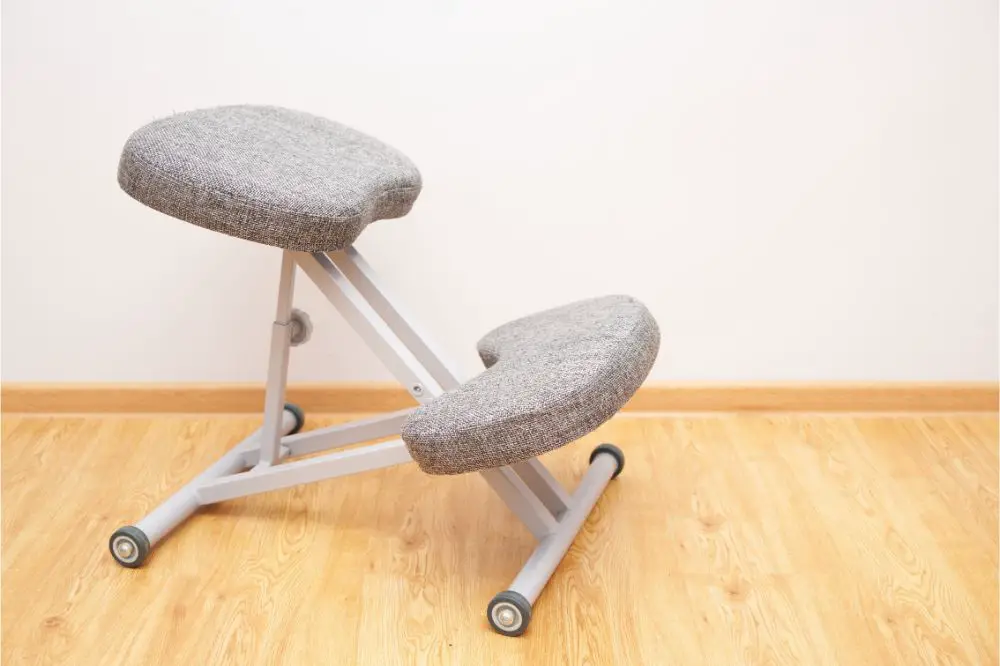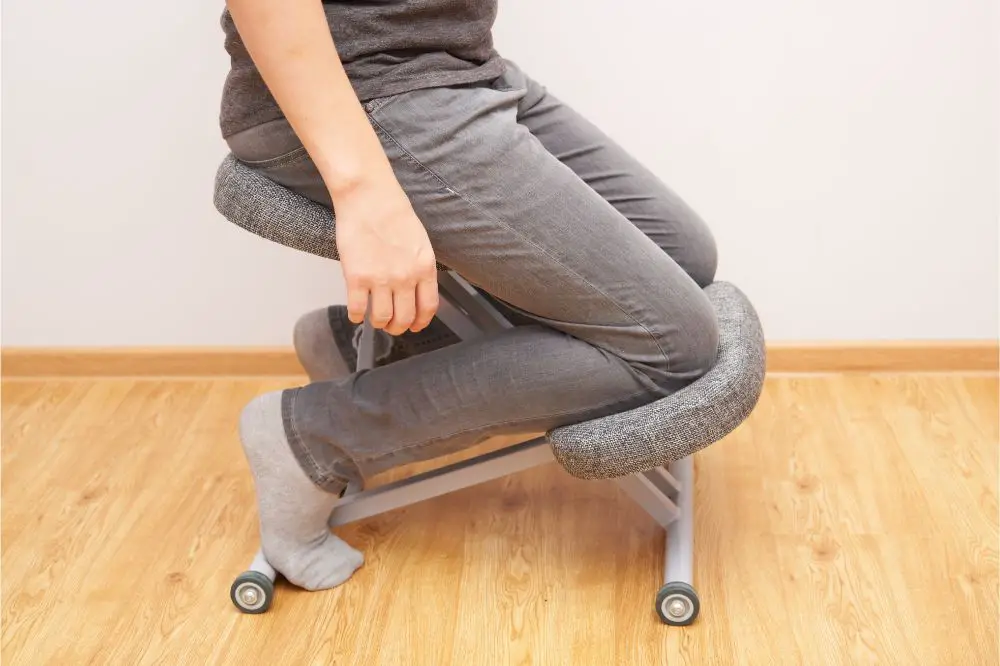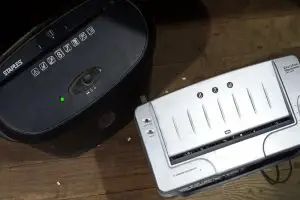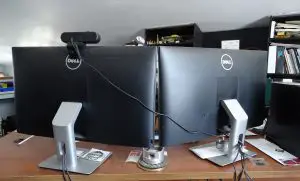Kneeling chairs are among the highly recommended alternatives to traditional office chairs.
However, they’re typically more expensive than most current units and models available in the market.
That’s why it isn’t uncommon to hear the question, “What is a kneeling chair?”
It is a piece of furniture that is only beginning to catch people’s attention sitting in front of a desk for hours.
Let us introduce to you this type of chair that has long existed.
At Office Solution Pro, we are passionate about Ergonomics! Our readers support the page. If you click on a link, we may earn a small commission at no cost to you. We hope you love the products we recommend as much as we do!
What Is a Kneeling Chair?
To truly understand what a kneeling chair is and why it comes with a high price tag, let’s learn more about its history and features.
The History
Dr. A.C. Mandal, a Danish surgeon, discovered that school children lean forward while seated.
This helps them alleviate the back pains they experience due to sitting for a couple of hours.
His almost 30 years of research concluded that chairs should have a forward-angle design to tilt a user’s pelvis forward, aligning their hips and spine.
In the middle of his research, a Norwegian named Hans Christian Mengshoel conceptualized a kneeling chair design.
He took inspiration from the forward-angled seiza benches that Tibetan monks use while meditating.
He then collaborated with furniture designers Peter Opsvik, Oddvin Rykken, and Svein Gusrud in 1978.
They tested the effects of balanced (balans) sitting on human anatomy and then developed a beneficial product based on their findings.
Rykken + Co. was the first furniture manufacturer to enter into a license agreement for Balans® Collection production and distribution.
With its release, several groups of individuals conducted more studies to compare it with conventional chairs.
One study concluded it wasn’t any different, while another found that it is beneficial for one’s health, especially regarding blood flow.
Two other studies supported the beneficial effects of the chair design.
One found that it promotes increased lumbar spine curvature, so it can contribute to lower back injury treatment.
The other confirmed that as long as the chair has more than 20 degrees of angle, it will help maintain standing spine curvature.
The Features
As noted, typical kneeling chairs have a tilted padded seat to maintain the proper, upright posture, allowing the spine to curve naturally.
There are also padded shin or knee rests, so the user doesn’t slide off the chair.
Compared to standard chairs that position your thighs at a 90-degree angle, kneeling chairs create an angle of around 60 to 70 degrees.
Also, the best ergonomic kneeling chair has an optimal kneeling incline ranging from 20 to 30 degrees to prevent you from slouching and leaning back.
Thus, most of your body weight is evenly distributed to the shins and buttocks, reducing back, tailbone, and coccyx strains and pains.
In addition, some of your body weight goes to the knees.
This design also ensures people with bad knees can enjoy similar benefits.
Of course, like with any collection of chairs, the kneeling chair’s design isn’t perfect; it also has its cons.
For one, getting in and out of the chair is quite challenging, but you’ll soon get used to it.
It will restrict leg movement and put pressure on your shins,
Experts advise that you use the chair for a maximum of 20 minutes and then stand up, stretch, and move around.

This advice is commonly given to people sitting for a couple of hours, no matter what chair you use.
Some also advise that you consider interchanging between kneeling and standard chairs.
If these recommendations seem undoable, you’ll be better off using kneeling chairs with backrests than backless chairs.
That’s because you can take quick breaks without standing.
Remember that you only need to lean back to rest from the upright position you’ve been in for a couple of hours.
Regarding the chair frame, the original design was high-quality wood, but you can already find quality units with a metal frames.
Although these angle chairs are generally lightweight, some have caster wheels for better maneuverability.
You’ll also find foldable models for better portability and easy storage.
What Are the Different Types of Kneeling Chairs?
While discussing the features, you already have an idea that you have various options to consider.
We’ll give you a better idea of your choices so you can decide whether this is the perfect office chair for you.
Hence, here’s a detailed look at the main types of kneeling chairs available:
Stool
The stool is the most affordable and common in the kneeling chair industry but might not be the most comfortable chair.

Although it has a wooden frame, the padding is usually made of basic foam and covered with cheaper fabric.
Still, it’s perfect for a non-busy home office.
Executive
Following the typical executive chair logic, this kneeling chair is designed with maximum comfort for users in mind.

The padding is usually memory foam covered with premium-quality leather, perfect for a busy office that requires sitting for more extended periods.
The frame is also typically made from steel or polished, high-quality wood. Thus, expect that it comes with a high price tag.
Deluxe
Considered one of the most expensive in the kneeling chair collection, the deluxe will give you the most comfortable chair experience.

However, it won’t give you the classic or vintage vibe that the last two offer because of the many design alterations.
Unlike the last two, wherein you can choose between chairs with a backrest and backless chairs, this type almost always comes with a backrest.
It also has five wheels; some manufacturers even integrate it with armrests.
These features make the unit look like a regular office chair with an added knee rest and an angled seat.
You can also find adjustable models, wherein you can tweak the lumbar support angle and the chair and knee height.
Rocking
With a curved base, this chair allows you to rock back and forth to keep you moving while seated for a couple of hours.
You can also find units without a crossbar at the base so that you can also rock them backward, forward, and sideways.

However, this comfortable chair is slightly more expensive than the non-rocking variety.
Also, it would be challenging to look for a rocking chair that will be comfortable for shorter individuals.
These chairs are usually for heights ranging from 5’2” to 6’6”.
Single Knee Rest or Pad
Whichever of the four types mentioned above of kneeling chairs you opt for, you have two options: the padded knee (or shin) rest.
As its name implies, the single type has one long pad where you can rest both your knees and shins.
With its sizeable gap-free footprint, you can position your shins or knees anywhere you want for comfort.
Double Knee Rest or Pad
This next and most common option has two separate knee or shin pads for each knee or shin.
There is a gap in between, and it won’t allow you to change your knee or shin position.
Nevertheless, this type ensures a more ergonomic lower limb angle.
Additionally, it would be easier to take breaks as you can simply move one of your feet to the gap and let them lay flat on the floor.
Saddled Seat
Most backrest and backless chairs have square or rectangular seats, but some units have saddled seats or those that resemble bicycle seats.
They’re more ergonomic since they encourage a more upright posture than you’ll achieve from the standard seat designs.
The bad news? Not only is this posture chair expensive, but the seat puts more pressure on your perineal area.
A Chair With a Non-typical but Functional Design
Now that you know the answer to “What is a kneeling chair?” its unusual design is not for everyone. If you have chosen a kneeling chair, read “How to sit on a kneeling chair to enjoy its benefits”
Still, we consider it a good investment as it promotes better spinal column health.
After all, you can choose between the different types to ensure you pick the ergonomic chair that matches your needs.

Sources
- Drury, C., & Francher, M. (1985). Evaluation of a forward-sloping chair. Applied Ergonomics, 16(1), 41-47. https://doi.org/10.1016/0003-6870(85)90145-0
- © 1989 by the American Physical Therapy Association Inc.
- © Lippincott-Raven Publishers.
- Bettany-Saltikov J, Warren J, Jobson M. Ergonomically designed kneeling chairs worth it? : Comparison of sagittal lumbar curvature in two different seating postures. Stud Health Technol Inform. 2008;140:103-6. PMID: 18810008.








